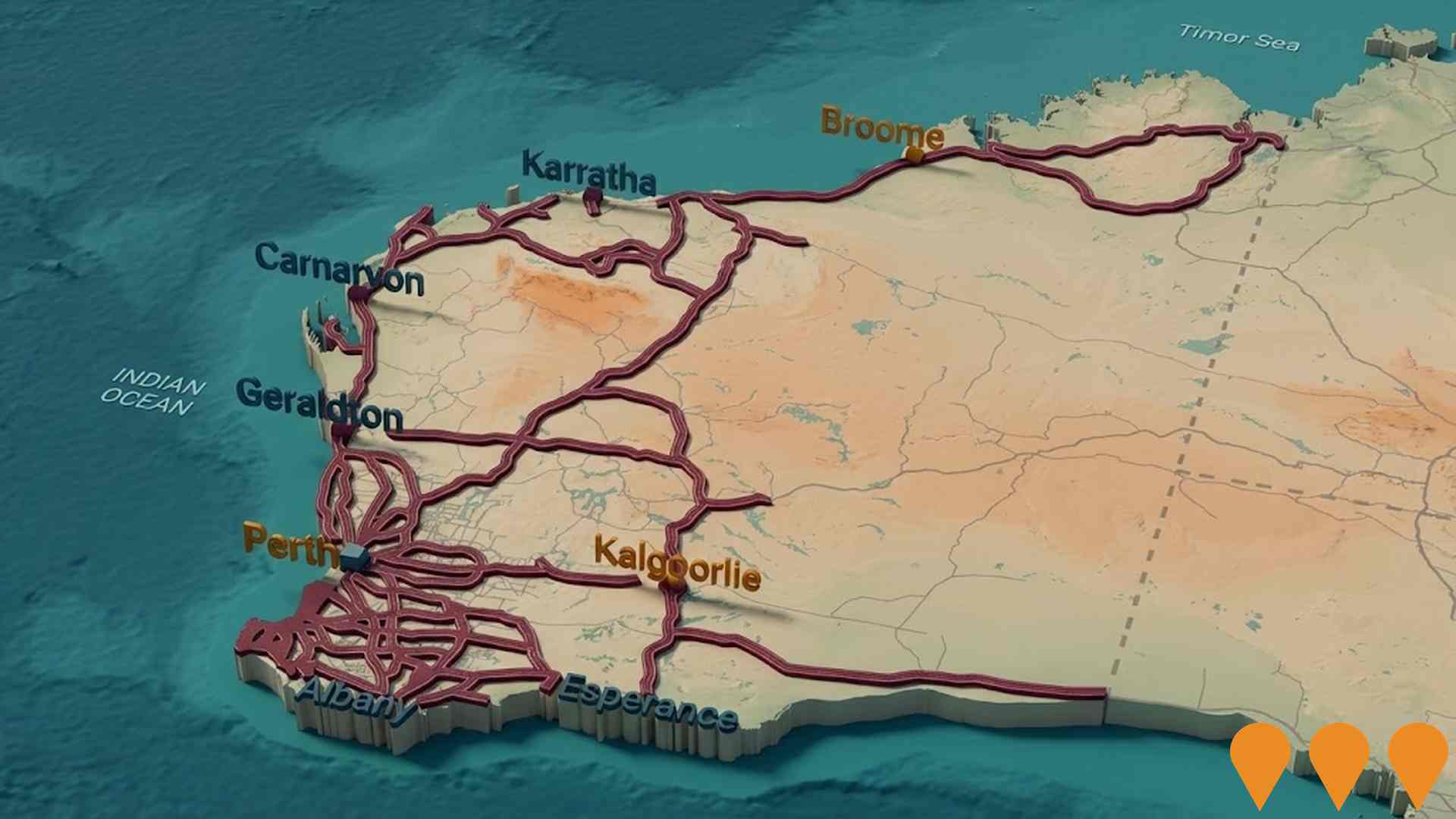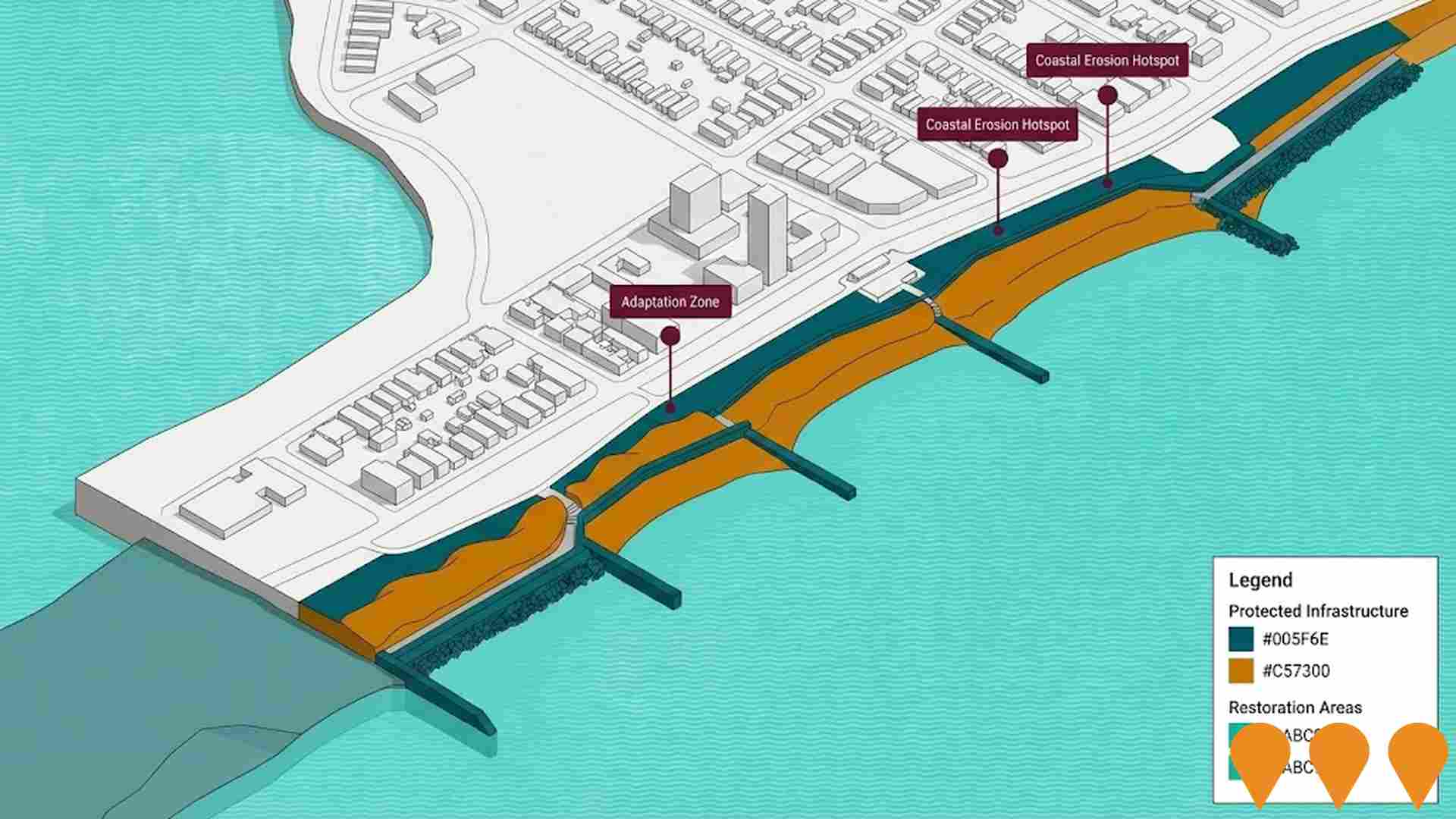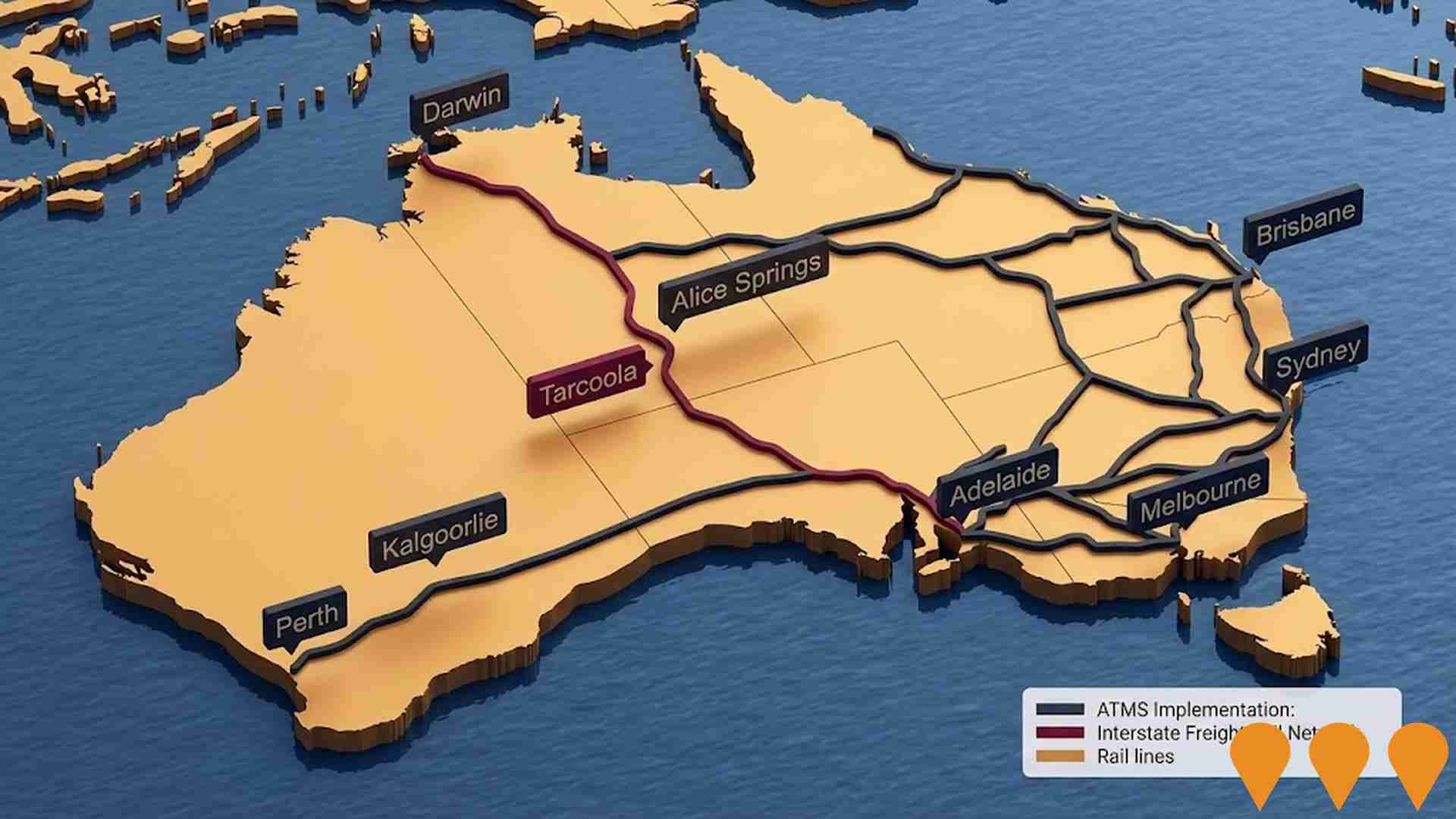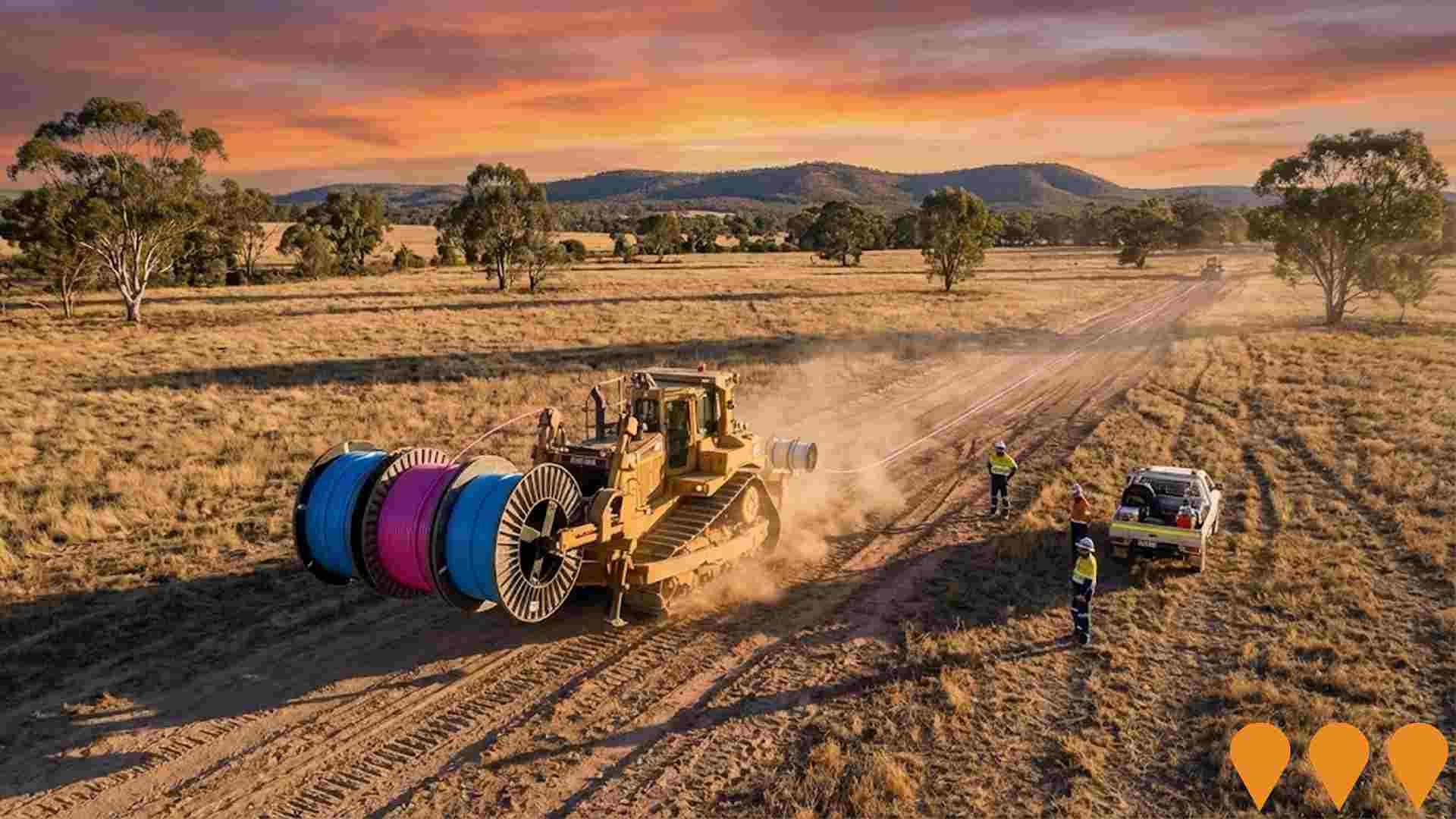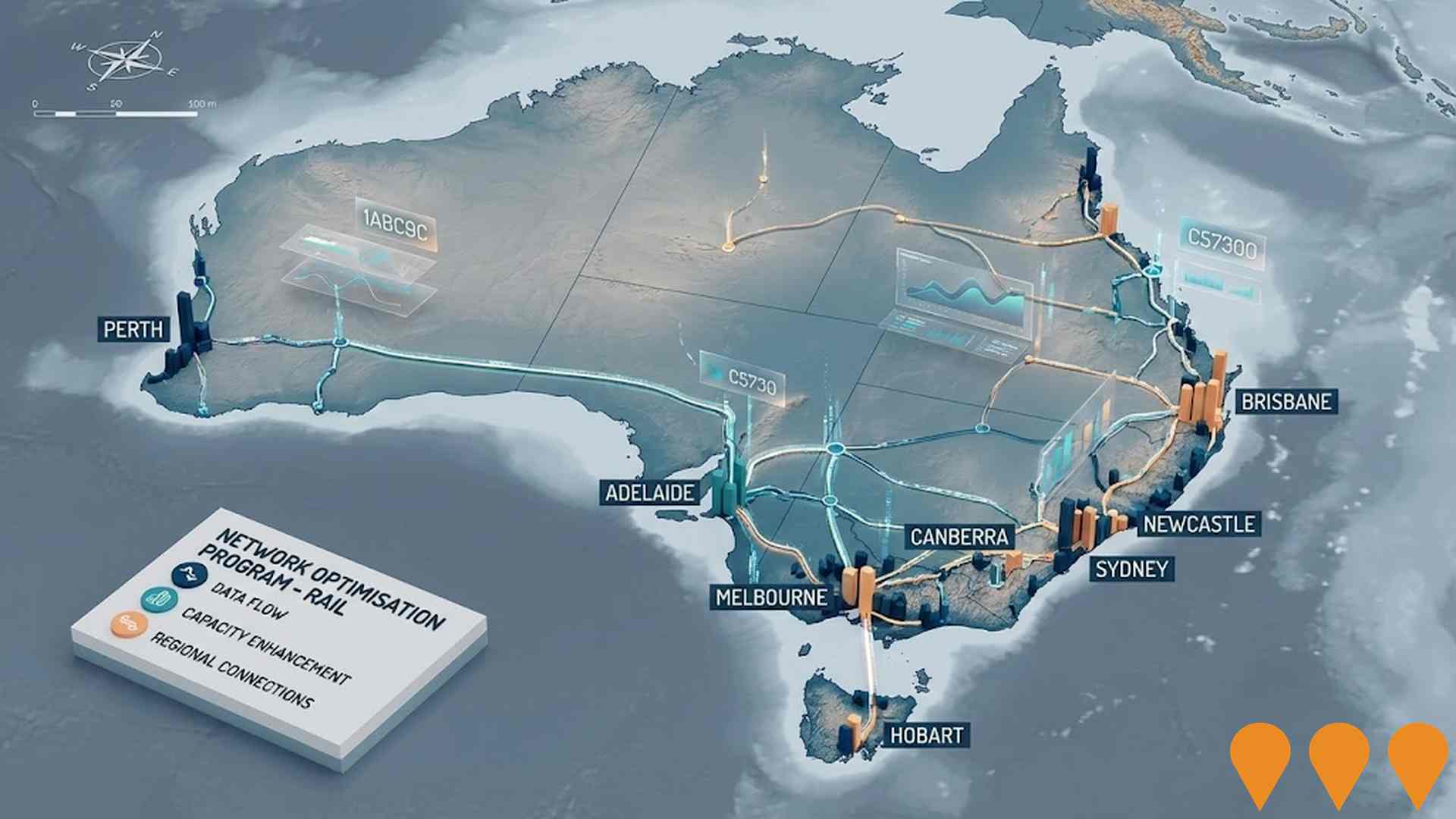Chart Color Schemes
est. as @ -- *
ABS ERP | -- people | --
2021 Census | -- people
Sales Activity
Curious about local property values? Filter the chart to assess the volume and appreciation (including resales) trends and regional comparisons, or scroll to the map below view this information at an individual property level.
Find a Recent Sale
Sales Detail
Population
Esperance is positioned among the lower quartile of areas assessed nationally for population growth based on AreaSearch's assessment of recent, and medium term trends
Esperance's population was around 12,527 as of November 2025. This figure reflects an increase of 524 people since the 2021 Census, which reported a population of 12,003. The change is inferred from ABS data showing an estimated resident population of 12,515 in June 2024 and an additional 28 validated new addresses since the Census date. This results in a density ratio of 26 persons per square kilometer. Over the past decade, Esperance has shown resilient growth patterns with a compound annual growth rate of 0.1%, outpacing its SA4 region. Natural growth contributed approximately 54.2% of overall population gains during recent periods.
AreaSearch is adopting ABS/Geoscience Australia projections for each SA2 area, released in 2024 with a base year of 2022. For areas not covered by this data and post-2032 estimations, AreaSearch uses growth rates by age cohort provided by the ABS in its latest Greater Capital Region projections (released in 2023, based on 2022 data). Future population trends indicate a median increase for non-metropolitan areas, with Esperance expected to grow by 1,350 persons to 2041, recording a gain of 10.7% over the 17 years.
Frequently Asked Questions - Population
Development
Residential development activity is lower than average in Esperance according to AreaSearch's national comparison of local real estate markets
Esperance averaged approximately 46 new dwelling approvals annually over the past five financial years, totalling 234 homes. As of FY-26, 18 approvals have been recorded. On average, 0.6 new residents arrived per new home constructed between FY-21 and FY-25. The average construction value for new properties was $317,000.
In FY-26, commercial approvals amounted to $32.3 million. Compared to the Rest of WA, Esperance had 19.0% more development per person over the five-year period. New development consisted of 91.0% detached houses and 9.0% townhouses or apartments.
The area has approximately 303 people per dwelling approval, indicating a low-density market. By 2041, Esperance is projected to grow by 1,338 residents. Current construction rates appear balanced with future demand, fostering steady market conditions without excessive price pressure.
Frequently Asked Questions - Development
Infrastructure
Esperance has emerging levels of nearby infrastructure activity, ranking in the 24thth percentile nationally
No factors influence a region's performance more than alterations to its local infrastructure, significant projects, and planning initiatives. AreaSearch has identified zero projects that could impact this area. Notable projects include South Coast Highway Improvements: Albany To Esperance in Western Australia, Agricultural Supply Chain Improvements, WA Police Satellite Technology Upgrade, and Regional And Rural Wa Road Network Safety Improvements, with the most relevant detailed below.
Professional plan users can use the search below to filter and access additional projects.
INFRASTRUCTURE SEARCH
 Denotes AI-based impression for illustrative purposes only, not to be taken as definitive under any circumstances. Please follow links and conduct other investigations from the project's source for actual imagery. Developers and project owners wishing us to use original imagery please Contact Us and we will do so.
Denotes AI-based impression for illustrative purposes only, not to be taken as definitive under any circumstances. Please follow links and conduct other investigations from the project's source for actual imagery. Developers and project owners wishing us to use original imagery please Contact Us and we will do so.
Frequently Asked Questions - Infrastructure
Resources Community Investment Initiative
A $750 million partnership between the Western Australian Government and seven major resource companies (Rio Tinto, BHP, Woodside Energy, Chevron Australia, Mineral Resources, Fortescue, Roy Hill) to co-fund community, social and regional infrastructure projects across regional Western Australia, with strong focus on the Pilbara, Goldfields, Kimberley, Mid West and Gascoyne.
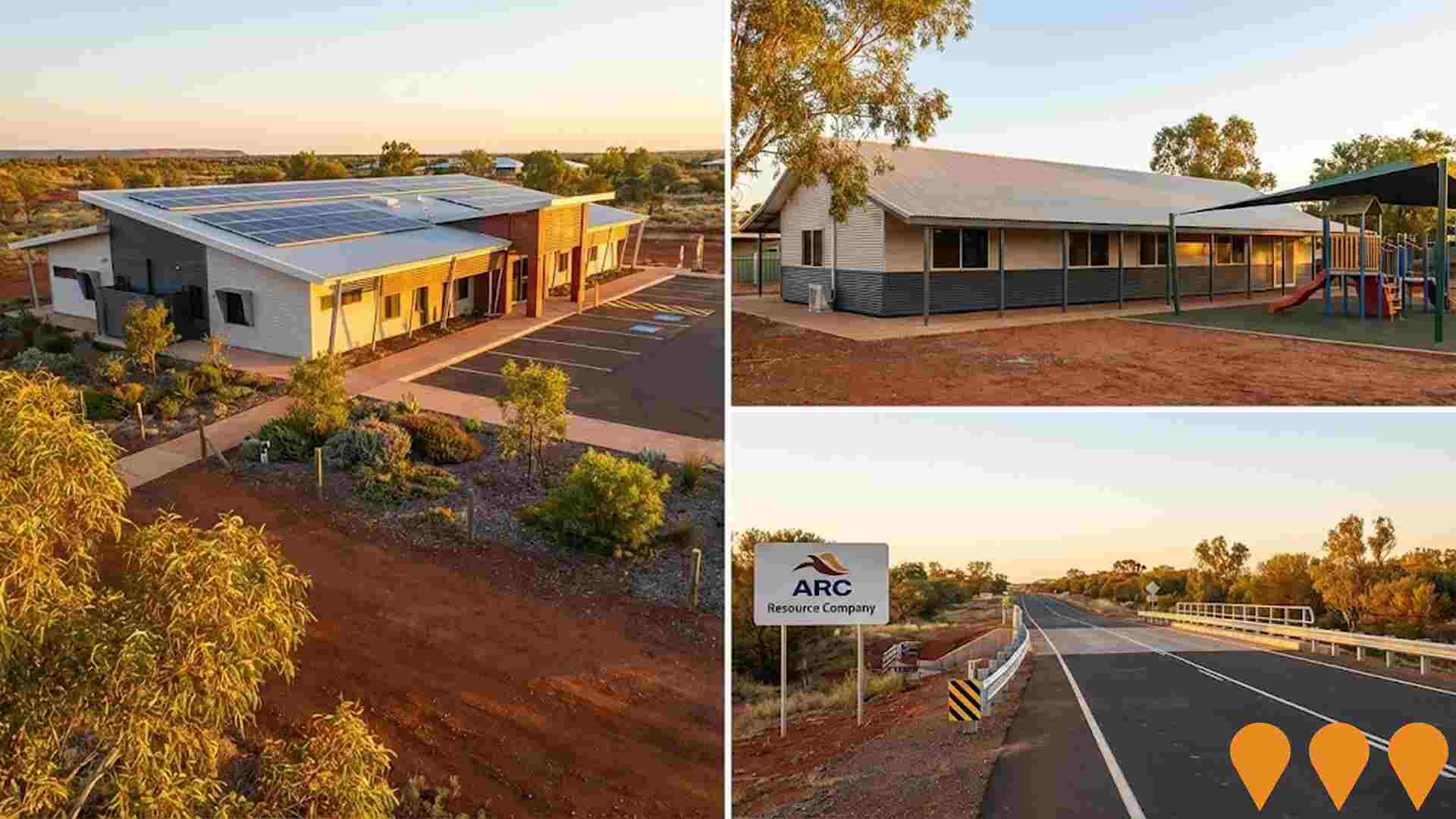
Enabling Infrastructure for Hydrogen Production
Australia has completed the National Hydrogen Infrastructure Assessment (NHIA) to 2050 and refreshed its National Hydrogen Strategy (2024). The programmatic focus has shifted to planning and enabling infrastructure through measures such as ARENA's Hydrogen Headstart and the Hydrogen Production Tax Incentive (from April 2025). Round 2 of Hydrogen Headstart consultation occurred in 2025. Collectively these actions aim to coordinate investment in transport, storage, water and electricity inputs linked to Renewable Energy Zones and priority hubs, supporting large-scale renewable hydrogen production and future export supply chains.
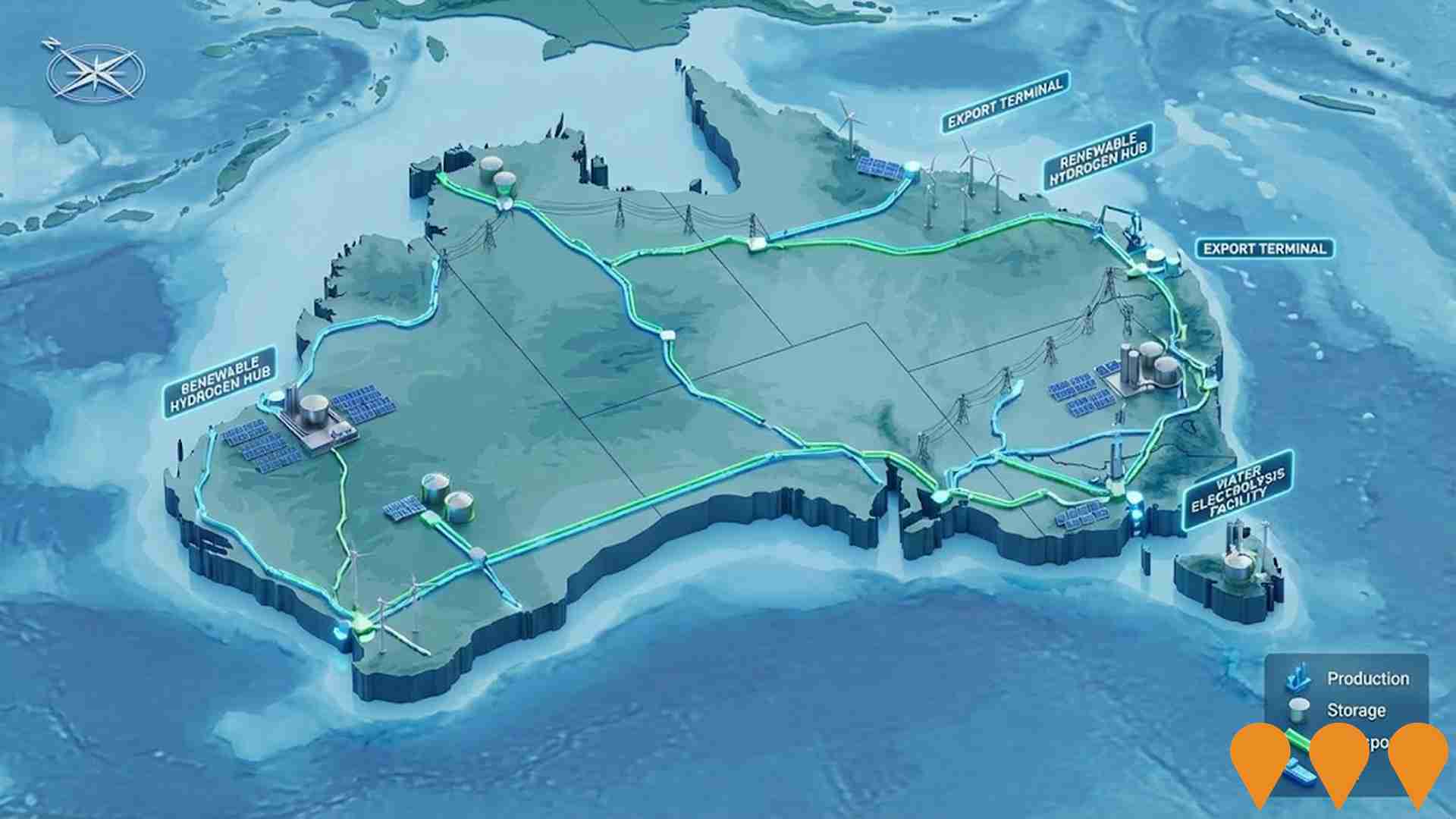
Bulk Water Supply Security
Nationwide program led by the National Water Grid Authority to improve bulk water security and reliability for non-potable and productive uses. Activities include strategic planning, science and business cases, and funding of state and territory projects such as storages, pipelines, dam upgrades, recycled water and efficiency upgrades to build drought resilience and support regional communities, industry and the environment.

National EV Charging Network (Highway Fast Charging)
Partnership between the Australian Government and NRMA to deliver a backbone EV fast charging network on national highways. Program funds and co-funds 117 DC fast charging sites at roughly 150 km intervals to connect all capital cities and regional routes, reducing range anxiety and supporting EV uptake.

WA Regional Digital Connectivity Program (WARDCP)
Statewide co-investment program delivering new and upgraded mobile, fixed wireless and broadband infrastructure to improve reliability, coverage and performance for regional and remote Western Australia. Current workstreams include the Regional Telecommunications Project, State Agriculture Telecommunications Infrastructure Fund, and the WA Regional Digital Connectivity Program (WARDCP).

Network Optimisation Program - Roads
A national program concept focused on improving congestion and reliability on urban road networks by using low-cost operational measures and technology (e.g., signal timing, intersection treatments, incident management) to optimise existing capacity across major city corridors.

South Coast Highway Improvements: Albany To Esperance
Upgrade of the South Coast Highway between Albany and Esperance aims to improve safety, reduce maintenance costs, and accommodate growth in tourism and freight.

Western Australia Agricultural Supply Chain Improvements
Improving Western Australia's aging freight network to reduce supply chain costs and increase export volumes for agriculture, through maintenance, upgrades, and new routes.
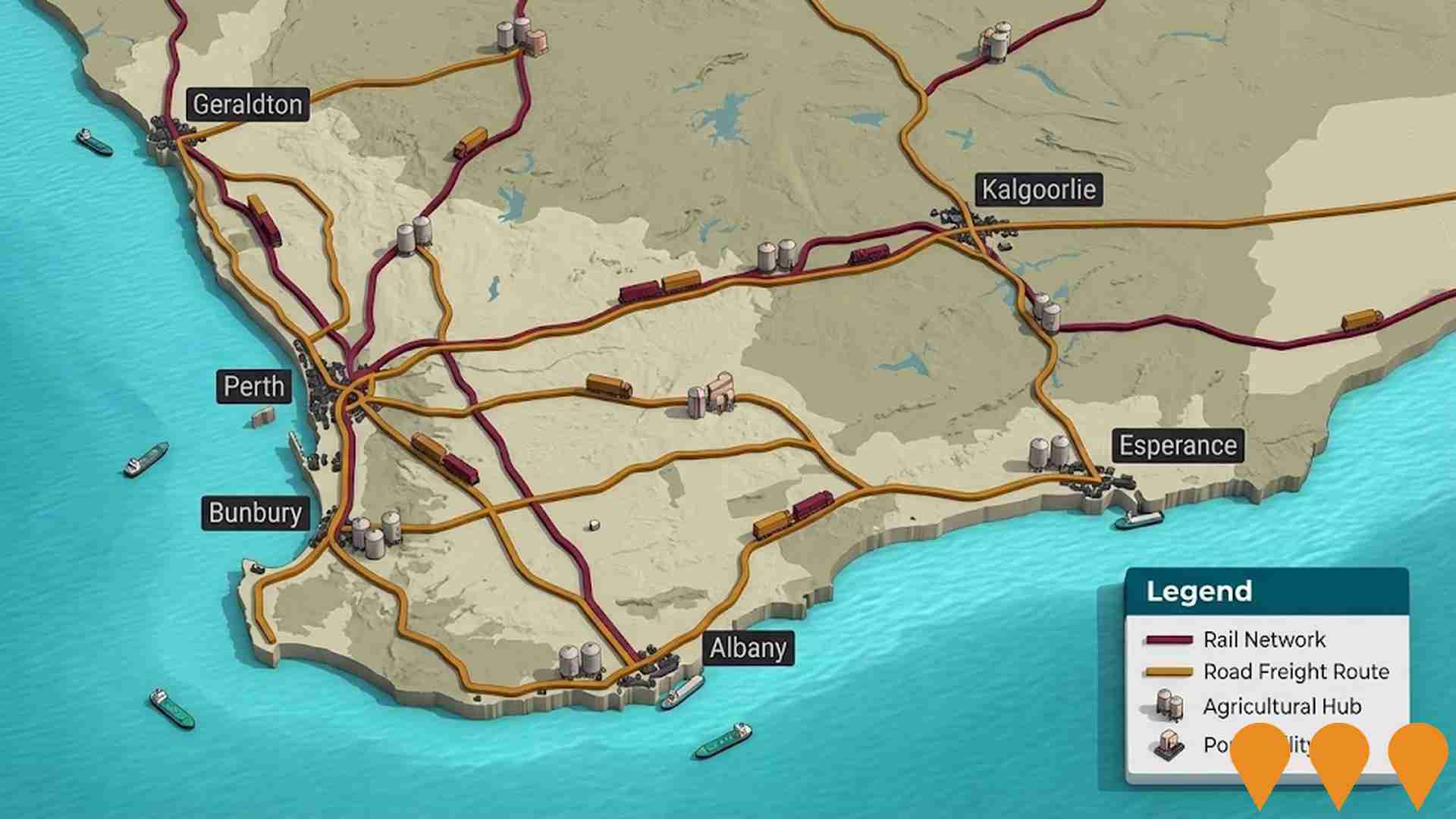
Employment
AreaSearch assessment positions Esperance ahead of most Australian regions for employment performance
Esperance has a balanced workforce with diverse sector representation as of June 2025. There are 6,148 residents employed, with an unemployment rate of 2.4%.
This is 0.7% lower than the Rest of WA's rate of 3.2%, and workforce participation is similar at 59.4%. Key employment sectors include health care & social assistance, retail trade, and transport, postal & warehousing. The area has a notable concentration in transport, postal & warehousing, with employment levels at 2.1 times the regional average. Mining has limited presence, accounting for 4.0% of employment compared to 11.7% regionally.
Many residents commute elsewhere for work based on Census data. In the 12 months prior, labour force decreased by 2.4%, and employment declined by 2.7%, leading to a rise in unemployment rate by 0.3 percentage points. This contrasts with Rest of WA where employment rose by 1.1%. National employment forecasts from Jobs and Skills Australia (May 2025) project growth of 6.6% over five years and 13.7% over ten years. Applying these projections to Esperance's employment mix suggests local growth of approximately 5.7% over five years and 12.2% over ten years, though this is a simple weighting extrapolation for illustrative purposes only.
Frequently Asked Questions - Employment
Income
Income levels align closely with national averages, indicating typical economic conditions for Australian communities according to AreaSearch analysis
Esperance's median income among taxpayers was $55,230 in the financial year ending June 2022. The average income stood at $71,723 during this period. Comparing these figures with the rest of Western Australia, Esperance's median and average incomes were lower by $2,093 and $660 respectively. Based on a 14.2% growth in wages since June 2022, estimated median income as of September 2025 would be approximately $63,073, with the average standing at $81,908. According to census data, incomes in Esperance rank modestly, between the 35th and 46th percentiles for households, families, and individuals. Income distribution shows that 31.5% of Esperance's population (3,946 individuals) fall within the $1,500 to $2,999 income range, which is consistent with broader trends across the surrounding region where 31.1% also fall into this category. After accounting for housing expenses, 86.1% of income remains for other expenses.
Frequently Asked Questions - Income
Housing
Esperance is characterized by a predominantly suburban housing profile, with a higher proportion of rental properties than the broader region
Esperance's dwelling structures, as per the latest Census, consisted of 86.9% houses and 13.1% other dwellings (semi-detached, apartments, 'other' dwellings), compared to Non-Metro WA's 89.0% houses and 10.9% other dwellings. Home ownership in Esperance stood at 35.4%, with mortgaged dwellings at 33.5% and rented ones at 31.1%. The median monthly mortgage repayment was $1,600, higher than Non-Metro WA's average of $1,517. The median weekly rent in Esperance was $270, compared to Non-Metro WA's $260. Nationally, Esperance's mortgage repayments were lower at $1,600 versus the Australian average of $1,863, and rents were substantially below the national figure of $375.
Frequently Asked Questions - Housing
Household Composition
Esperance has a typical household mix, with a fairly typical median household size
Family households account for 67.4% of all households, including 26.1% that are couples with children, 29.9% that are couples without children, and 10.3% that are single parent families. Non-family households make up the remaining 32.6%, with lone person households at 29.8% and group households comprising 2.8% of the total. The median household size is 2.4 people, which matches the average for the Rest of WA.
Frequently Asked Questions - Households
Local Schools & Education
Esperance faces educational challenges, with performance metrics placing it in the bottom quartile of areas assessed nationally
The area's university qualification rate is 15.1%, significantly lower than the Australian average of 30.4%. Bachelor degrees are most common at 11.5%, followed by graduate diplomas (2.0%) and postgraduate qualifications (1.6%). Vocational credentials are prevalent, with 40.9% of residents aged 15+ holding such qualifications, including advanced diplomas (9.2%) and certificates (31.7%). Educational participation is high at 30.2%, comprising primary education (12.2%), secondary education (10.2%), and tertiary education (1.7%).
Eight schools operate in Esperance, educating approximately 2,348 students, with typical Australian school conditions (ICSEA: 956) and balanced educational opportunities. Education provision is balanced with five primary and three secondary schools serving distinct age groups.
Frequently Asked Questions - Education
Schools Detail
Nearby Services & Amenities
Transport
Transport servicing is low compared to other areas nationally based on assessment of service frequency, route connectivity and accessibility
Esperance has 125 active public transport stops, all of which are bus stops. These stops are served by six different routes that together offer 103 weekly passenger trips. The accessibility of these services is limited, with residents typically living 622 meters away from the nearest stop.
On average, there are 14 trips per day across all routes, equating to roughly 0 weekly trips per individual stop.
Frequently Asked Questions - Transport
Transport Stops Detail
Health
Health outcomes in Esperance are marginally below the national average with common health conditions slightly more prevalent than average across both younger and older age cohorts
Esperance's health indicators show below-average results with common health conditions slightly more prevalent than average across both younger and older age groups.
Approximately 55% (~6,927 people) of Esperance's total population has private health cover, which is very high compared to other areas. The most common medical conditions are arthritis (8.4%) and asthma (8.1%). A total of 67.8% of residents claim to be completely clear of medical ailments, compared to 68.9% across the rest of WA. Esperance has 19.1% (2,393 people) of its population aged 65 and over. Health outcomes among seniors are particularly strong, performing better than the general population in health metrics.
Frequently Asked Questions - Health
Cultural Diversity
Esperance is considerably less culturally diverse than average when assessed alongside AreaSearch's national rankings for language and cultural background related metrics
Esperance's cultural diversity was found to be below average. As of the census, 84.3% of its population were citizens, 85.3% were born in Australia, and 95.2% spoke English only at home. Christianity was the predominant religion, comprising 42.4% of Esperance's population.
Buddhism, however, was overrepresented, making up 0.8% compared to 0.7% across the rest of WA. In terms of ancestry, the top three groups were Australian (34.0%), English (31.7%), and Scottish (7.7%). Notably, New Zealanders were equally represented at 0.9%, Maori at 0.8%, and Australian Aboriginals were slightly overrepresented at 3.5% compared to regional averages of 0.9%, 0.8%, and 3.2% respectively.
Frequently Asked Questions - Diversity
Age
Esperance hosts an older demographic, ranking in the top quartile nationwide
Esperance's median age is 41, close to Rest of WA's figure of 40 and slightly exceeding the national norm of 38. The 15-24 age group comprises 11.8%, higher than Rest of WA, while the 45-54 cohort stands at 11.8%. Post the 2021 Census, the 35-44 age group grew from 11.6% to 13.2%, and the 25-34 cohort increased from 11.1% to 12.2%. Conversely, the 45-54 cohort decreased from 13.2% to 11.8%. By 2041, Esperance's age profile is projected to change significantly. The 25-34 group is expected to grow by 45%, reaching 2,207 from 1,527. Meanwhile, population declines are forecast for the 55-64 and 15-24 cohorts.

